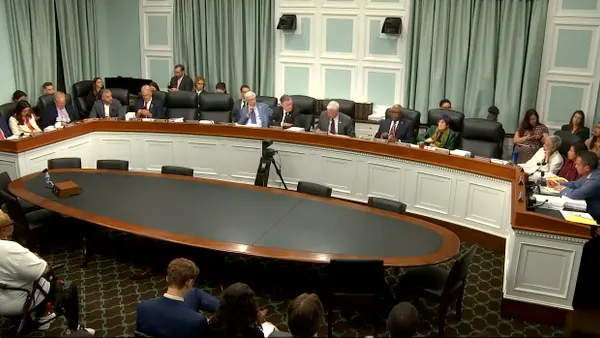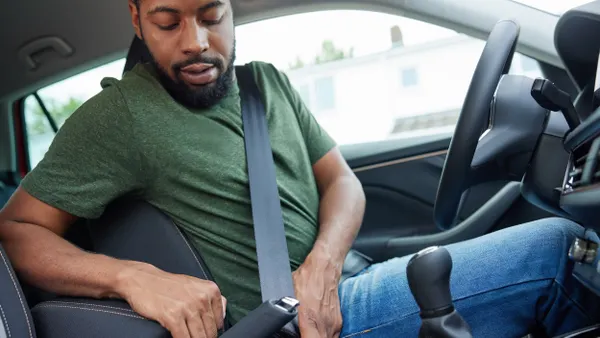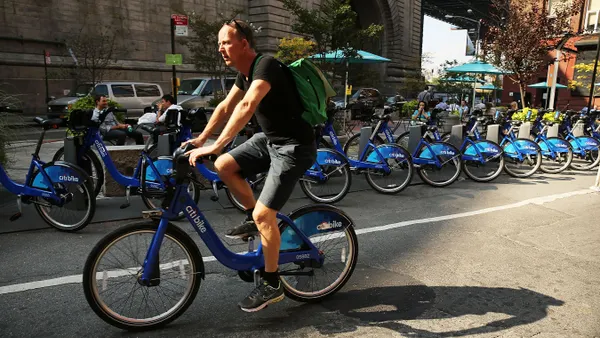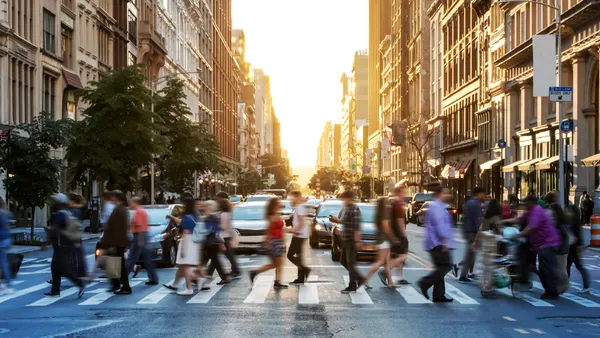Dive Brief:
- While autonomous driving technologies continue to reach development milestones industrywide, cities must apply digital transformation to their infrastructure to complement the goals of the autonomous vehicle (AV) sector, said Los Angeles Department of Transportation (LADOT) General Manager Seleta Reynolds.
- In a Tuesday AV webinar hosted by media company Axios, Reynolds said cities "won't be able to rely on autonomy to solve pedestrian safety," a lesson she's learned after nearly five years of working with auto manufacturers and software creators. Instead, cities need to "bring some of the same intelligence and nimbleness" seen in the private sector into their work to influence how traffic safety innovations are designed and delivered, she said.
- Reynolds also highlighted the importance of maintaining equity as cities prepare for AVs, noting that concepts like dedicated AV traffic lanes could create more problems than solutions for some communities. She said those lanes would "continue to privilege people who can either afford to purchase their own AVs, or who can afford to pay for a company who operates a fleet to send those AVs to pick them up and move them around. And if what we’re going to do is solve the problems of a privileged few, we’re going to completely fail on the bigger problems that we have at hand around climate and inequity.”
Dive Insight:
When Reynolds started at LADOT in 2014, the AV industry was touting 2021 as the year fully autonomous, Level 5 vehicles would be ubiquitous on U.S. streets and freeways, she said. "So we sharpened our pencils and got to work to try and understand what that would mean," for the city's municipal budget and its driver information system.
She went on to say that the hype and pressure on cities to get ready for AVs was actually a form of "autonowashing," or leveraging the influence of cities to secure more support for AV development.
It was "a way of potentially having auto manufacturers and other folks who were getting a lot of VC funding to both continue getting that funding and also to work really hard at the federal level, and even the state level, to preempt cities out of being able to influence or have a role in the creation of regulations for AVs," she said.
The onus must be on cities to tackle some of the traffic and pedestrian problems that AV manufacturers hope to address, she said, noting that AVs won't be a perfect silver bullet for these challenges. She cited research from AAA that found advanced driver assistance systems (ADAS) — the preliminary autonomy systems placed in vehicles today — are not only distracting but also do a poor job at detecting most pedestrians.
Meanwhile, Mothers Against Drunk Driving (MADD) National President Helen Witty shared optimism on the webinar regarding current ADAS technologies, saying they help to eliminate drunk driving — something often touted as a key benefit of AV development. She said if the technology were standard in all cars, it could save 9,400 lives annually.
The broader public has time to adapt to current ADAS technologies while anticipating the widespread use of Level 5 AVs, especially considering the "political economy" of the vehicles. Selika Talbott, lecturer at American University and former transportation executive, said on the call that we "have a tug of war between localities and the federal government" regarding regulatory frameworks, and this tension will continue to stall AV development.
"Right now, it's like the wild west," she said.
Reynolds suggested it is in the best interest of public sector transportation executives and private sector manufacturers to collaborate on autonomous driving developments to truly align on core goals that can benefit future populations.
"If DOT commissioners ruled the world and wrote the work plans for AV companies, they’d probably look really different," she said.











